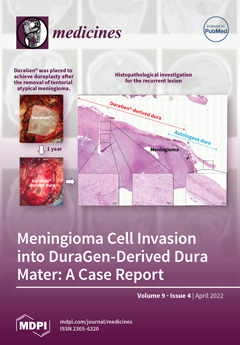Open AccessCase Report
Novel PKD2 Missense Mutation p.Ile424Ser in an Individual with Multiple Hepatic Cysts: A Case Report
by
Seiko Miura, Yo Niida, Chieko Hashizume, Ai Fujii, Yuta Takagaki, Kahoru Kusama, Sumiyo Akazawa, Tetsuya Minami, Tsuyoshi Mukai, Kengo Furuichi, Mutsumi Tsuchishima, Nobuhiko Ueda, Hiroyuki Takamura, Daisuke Koya and Tohru Ito
Viewed by 3054
Abstract
We report a novel missense mutation, p.Ile424Ser, in the
PKD2 gene of an autosomal dominant polycystic kidney disease (ADPKD) patient with multiple liver cysts. A 57-year-old woman presented to our university hospital with abdominal fullness, decreasing appetite, and dyspnea for three months. A
[...] Read more.
We report a novel missense mutation, p.Ile424Ser, in the
PKD2 gene of an autosomal dominant polycystic kidney disease (ADPKD) patient with multiple liver cysts. A 57-year-old woman presented to our university hospital with abdominal fullness, decreasing appetite, and dyspnea for three months. A percutaneous drainage of hepatic cysts was performed with no significant symptomatic relief. A computed tomography (CT) scan revealed a hepatic cyst in the lateral portion of the liver with appreciable compression of the stomach. Prior to this admission, the patient had undergone three drainage procedures with serial CT-based follow-up of the cysts over the past 37 years. With a presumptive diagnosis of extrarenal manifestation of ADPKD, we performed both a hepatic cystectomy and a hepatectomy. Because the patient reported a family history of hepatic cysts, we conducted a postoperative genetic analysis. A novel missense mutation, p.Ile424Ser, was detected in the
PKD2 gene. Mutations in either the
PKD1 or
PKD2 genes account for most cases of ADPKD. To the extent of our knowledge, this point mutation has not been reported in the general population. Our in-silico analysis suggests a hereditary likely pathogenic mutation.
Full article
►▼
Show Figures




